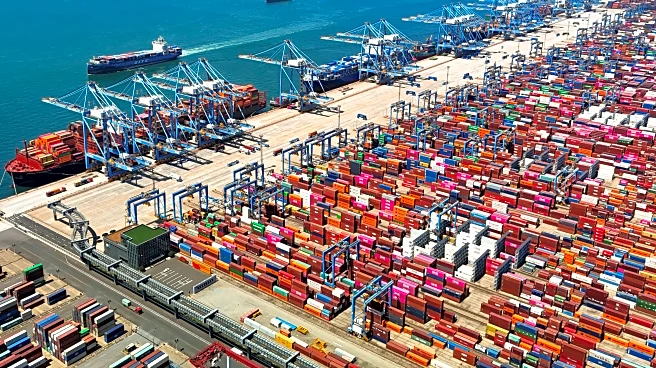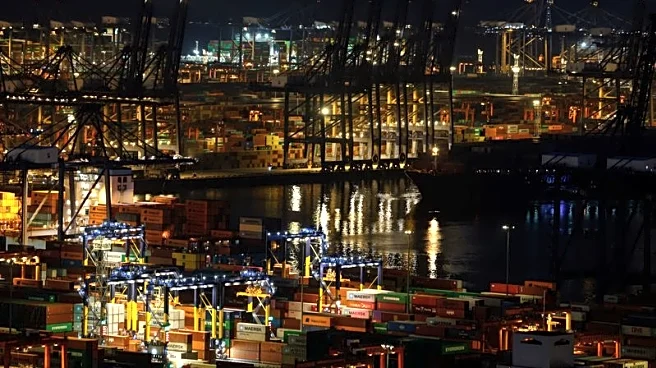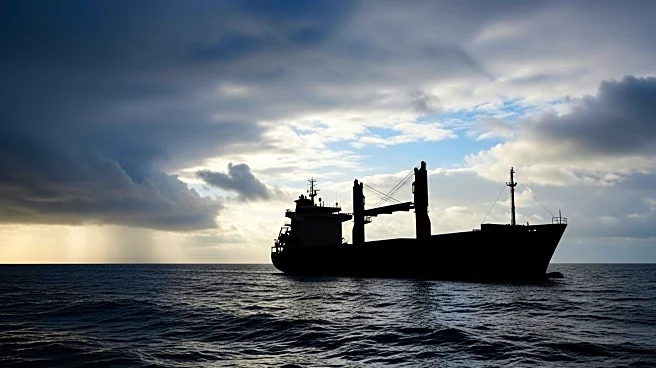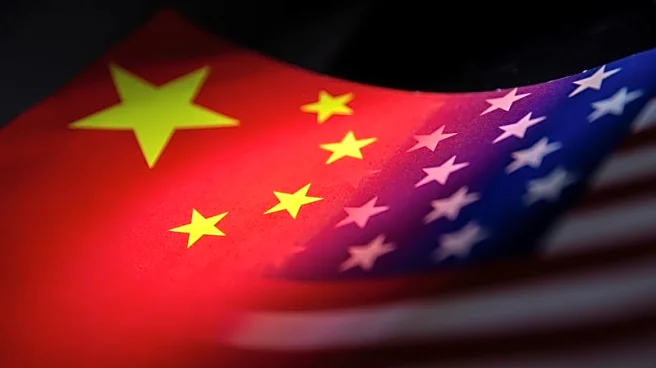What's Happening?
China has announced new port fees on U.S.-owned vessels docking in the country, in response to planned American port fees on Chinese ships. The fees, set at 400 yuan ($56) per net ton per voyage, will apply to vessels owned or operated by American companies, ships built in the U.S., or those flying the American flag. These fees will increase annually until 2028, reaching 1,120 yuan ($157) per net ton. The move comes as a countermeasure to what China describes as 'wrongful' U.S. practices, specifically targeting American ships with significant U.S. links. The fees will take effect on October 14, coinciding with the U.S. imposition of port fees on Chinese vessels.
Why It's Important?
The imposition of retaliatory port fees by China highlights escalating tensions between the two nations ahead of trade talks between President Trump and Chinese leader Xi Jinping. This development could impact international shipping and trade, particularly affecting U.S.-owned and operated vessels. The fees are expected to increase operational costs for American shipping companies, potentially disrupting trade routes and affecting global shipping dynamics. The move also underscores China's strategic response to U.S. policies, aiming to protect its shipping industry and challenge perceived discriminatory practices.
What's Next?
The upcoming trade talks between President Trump and Xi Jinping at the Asia-Pacific Economic Cooperation forum may address these escalating trade measures. Stakeholders in the shipping industry will likely monitor the situation closely, assessing the impact on freight rates and trade routes. The U.S. and China may negotiate terms to mitigate the financial burden on shipping companies, potentially leading to adjustments in the imposed fees. The broader implications for international trade relations and economic policies remain uncertain, with potential shifts in global shipping strategies.
Beyond the Headlines
The retaliatory measures by China could have long-term implications for international trade norms and economic diplomacy. The fees reflect deeper geopolitical tensions and may influence future trade negotiations between major global economies. The situation also raises questions about the sustainability of current trade practices and the need for more equitable international shipping regulations. As both nations navigate these challenges, the global shipping industry may experience shifts in operational strategies and alliances.












